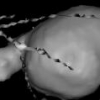Free Online Productivity Tools
i2Speak
i2Symbol
i2OCR
iTex2Img
iWeb2Print
iWeb2Shot
i2Type
iPdf2Split
iPdf2Merge
i2Bopomofo
i2Arabic
i2Style
i2Image
i2PDF
iLatex2Rtf
Sci2ools
112
click to vote
CVPR
2010
IEEE
2010
IEEE
Surface Extraction from Binary Volumes with Higher-Order Smoothness
A number of 3D shape reconstruction algorithms, in particular 3D image segmentation methods, produce their results in the form of binary volumes, where a binary value indicates whether a voxel is associated with the interior or the exterior. For visualization purpose, it is often desirable to convert a binary volume into a surface representation. Straightforward extraction of the median isosurfaces for binary volumes using the marching cubes algorithm, however, produces jaggy, visually unrealistic meshes. Therefore, similarly to some previous works, we suggest to precede the isosurface extraction by replacing the original binary volume with a new continuous-valued embedding function, so that the zero-isosurface of the embedding function is smooth but at the same time consistent with the original binary volume. In contrast to previous work, computing such an embedding function in our case permits imposing a higher-order smoothness on the embedding function and involves solving a convex ...
Related Content
| Added | 30 Mar 2010 |
| Updated | 14 May 2010 |
| Type | Conference |
| Year | 2010 |
| Where | CVPR |
| Authors | Victor Lempitsky |
Comments (0)

